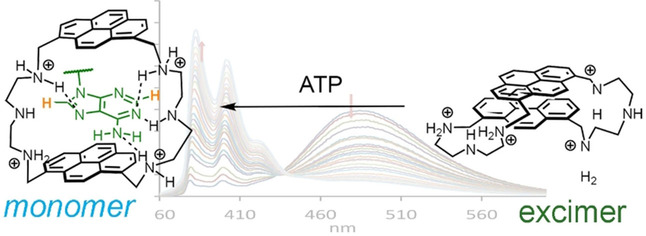The paper with the participation of of NIOCh's researcher Aleksandr M. Agafontsev (internationsl collaboration) is published in the journal Chemistry - A European Journal (IF=5,16)
Ratiometric detection of ATP by fluorescent cyclophanes with bellows‐type sensing mechanism
Aleksandr M. Agafontsev, Tatiana A. Shumilova, Aleksandr S. Oshchepkov, Frank Hampel, Evgeny A KataevChemistry - A European Journal,
Volume 26, Issue 44, Special Issue: Young Chemists 2020, August 6, 2020, Pages 9991-9997
This article also appears in: Young Chemists 2020![]()
https://doi.org/10.1002/chem.202001523

Abstract
Pyrene‐based cyclophanes have been synthesized with the aim to realize a bellows‐type sensing mechanism for the ratiometric detection of nucleotide concentrations in a buffered aqueous solution. The sensing mechanism involves the encapsulation of a nucleobase between two pyrene rings, which affects the monomer‐excimer equilibrium of the receptor in the excited state. The nature of the spacer and its connection pattern to pyrene rings have been varied to achieve high selectivity for ATP. The 1,8‐substituted pyrene‐based cyclophane with the 2,2′‐diaminodiethylamine spacer demonstrates the best selectivity for ATP showing a 50‐fold increase in the monomer‐excimer emission ratio upon saturation with the nucleotide. The receptor can detect ATP within the biological concentrations range over a wide pH range. NMR and spectroscopic studies have revealed the importance of hydrogen bonding and stacking interactions for achieving a required receptor selectivity. The probe has been successfully applied for the real‐time monitoring of creatine kinase activity.
Altmetrics:


